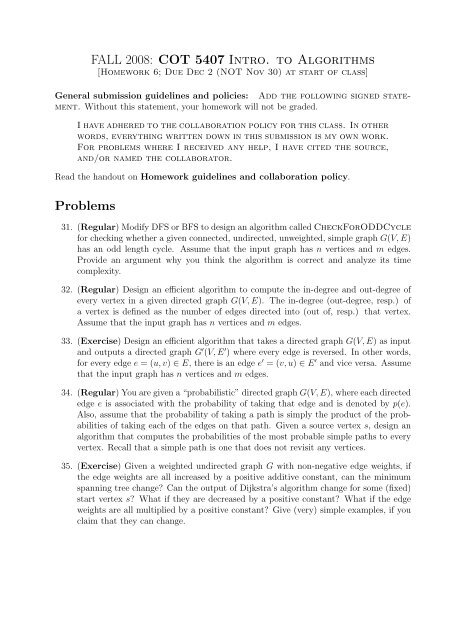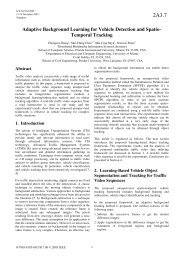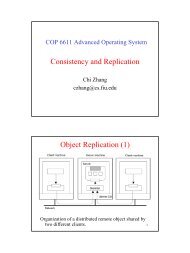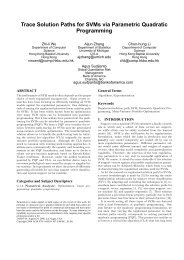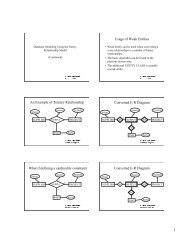FALL 2008: COT 5407 Intro. to Algorithms Problems
FALL 2008: COT 5407 Intro. to Algorithms Problems
FALL 2008: COT 5407 Intro. to Algorithms Problems
- No tags were found...
You also want an ePaper? Increase the reach of your titles
YUMPU automatically turns print PDFs into web optimized ePapers that Google loves.
<strong>FALL</strong> <strong>2008</strong>: <strong>COT</strong> <strong>5407</strong> <strong>Intro</strong>. <strong>to</strong> <strong>Algorithms</strong>[Homework 6; Due Dec 2 (NOT Nov 30) at start of class]General submission guidelines and policies: Add the following signed statement.Without this statement, your homework will not be graded.I have adhered <strong>to</strong> the collaboration policy for this class. In otherwords, everything written down in this submission is my own work.For problems where I received any help, I have cited the source,and/or named the collabora<strong>to</strong>r.Read the handout on Homework guidelines and collaboration policy.<strong>Problems</strong>31. (Regular) Modify DFS or BFS <strong>to</strong> design an algorithm called CheckForODDCyclefor checking whether a given connected, undirected, unweighted, simple graph G(V, E)has an odd length cycle. Assume that the input graph has n vertices and m edges.Provide an argument why you think the algorithm is correct and analyze its timecomplexity.32. (Regular) Design an efficient algorithm <strong>to</strong> compute the in-degree and out-degree ofevery vertex in a given directed graph G(V, E). The in-degree (out-degree, resp.) ofa vertex is defined as the number of edges directed in<strong>to</strong> (out of, resp.) that vertex.Assume that the input graph has n vertices and m edges.33. (Exercise) Design an efficient algorithm that takes a directed graph G(V, E) as inputand outputs a directed graph G ′ (V, E ′ ) where every edge is reversed. In other words,for every edge e = (u, v) ∈ E, there is an edge e ′ = (v, u) ∈ E ′ and vice versa. Assumethat the input graph has n vertices and m edges.34. (Regular) You are given a “probabilistic” directed graph G(V, E), where each directededge e is associated with the probability of taking that edge and is denoted by p(e).Also, assume that the probability of taking a path is simply the product of the probabilitiesof taking each of the edges on that path. Given a source vertex s, design analgorithm that computes the probabilities of the most probable simple paths <strong>to</strong> everyvertex. Recall that a simple path is one that does not revisit any vertices.35. (Exercise) Given a weighted undirected graph G with non-negative edge weights, ifthe edge weights are all increased by a positive additive constant, can the minimumspanning tree change? Can the output of Dijkstra’s algorithm change for some (fixed)start vertex s? What if they are decreased by a positive constant? What if the edgeweights are all multiplied by a positive constant? Give (very) simple examples, if youclaim that they can change.
36. (Exercise) Does Dijkstra’s algorithm work correctly if some edge weights are negative?Does it work correctly if some edge weights are negative, but there are no negativeweight cycles?37. (Regular) Can Dijkstra’s algorithm work be modified <strong>to</strong> work correctly if all edgeshave non-negative weights, but we need <strong>to</strong> compute the longest simple path from thesource <strong>to</strong> every vertex?38. (Extra Credit) Problem 23.2-7, page 574.39. (Extra Credit) Problem 23-3, page 577.40. (Regular) Modify Floyd-Warshall’s algorithm <strong>to</strong> output the number of distinct shortestpaths between every pair of vertices in an unweighted undirected graph.


